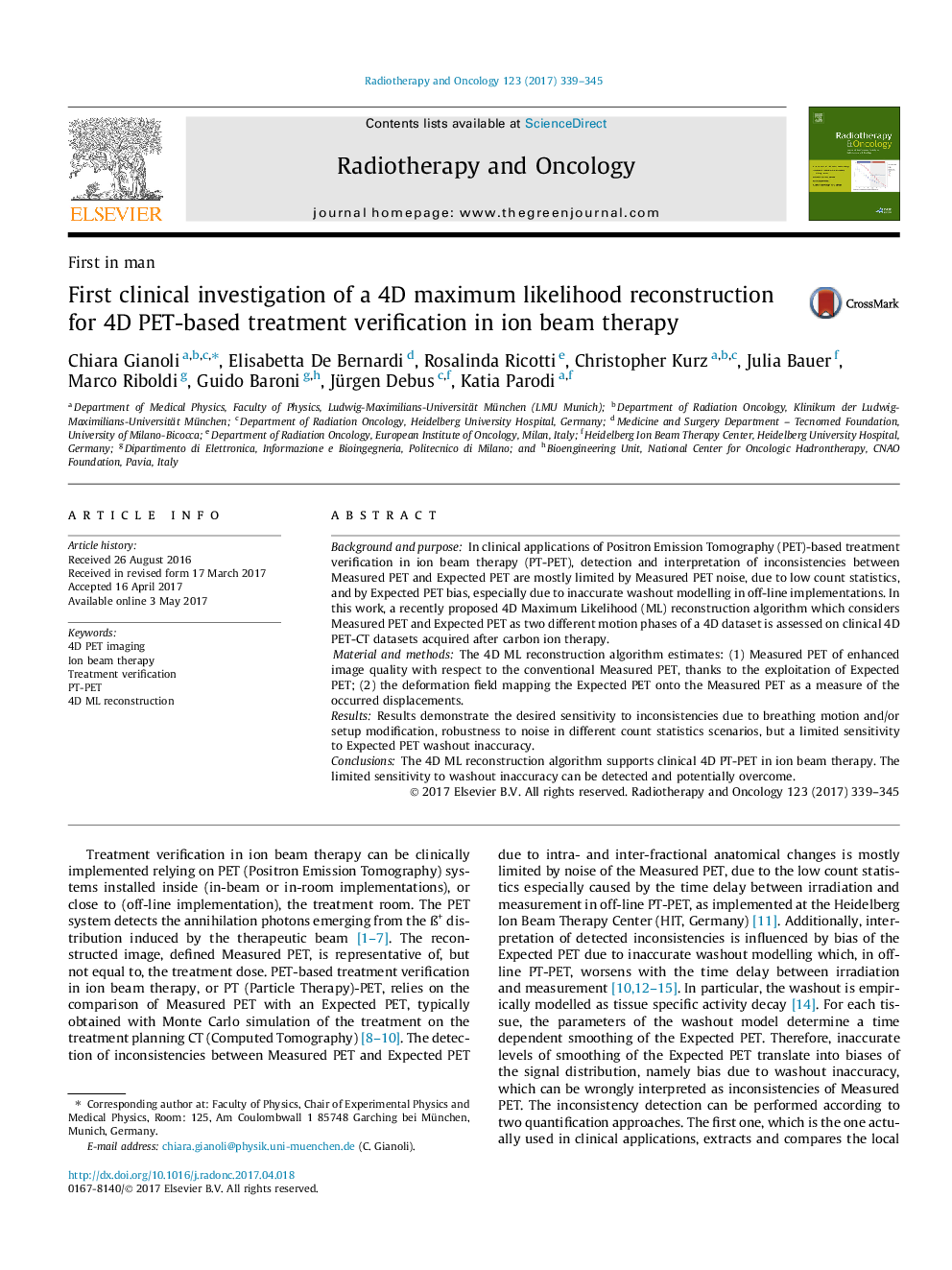| Article ID | Journal | Published Year | Pages | File Type |
|---|---|---|---|---|
| 5529818 | Radiotherapy and Oncology | 2017 | 7 Pages |
Background and purposeIn clinical applications of Positron Emission Tomography (PET)-based treatment verification in ion beam therapy (PT-PET), detection and interpretation of inconsistencies between Measured PET and Expected PET are mostly limited by Measured PET noise, due to low count statistics, and by Expected PET bias, especially due to inaccurate washout modelling in off-line implementations. In this work, a recently proposed 4D Maximum Likelihood (ML) reconstruction algorithm which considers Measured PET and Expected PET as two different motion phases of a 4D dataset is assessed on clinical 4D PET-CT datasets acquired after carbon ion therapy.Material and methodsThe 4D ML reconstruction algorithm estimates: (1) Measured PET of enhanced image quality with respect to the conventional Measured PET, thanks to the exploitation of Expected PET; (2) the deformation field mapping the Expected PET onto the Measured PET as a measure of the occurred displacements.ResultsResults demonstrate the desired sensitivity to inconsistencies due to breathing motion and/or setup modification, robustness to noise in different count statistics scenarios, but a limited sensitivity to Expected PET washout inaccuracy.ConclusionsThe 4D ML reconstruction algorithm supports clinical 4D PT-PET in ion beam therapy. The limited sensitivity to washout inaccuracy can be detected and potentially overcome.
